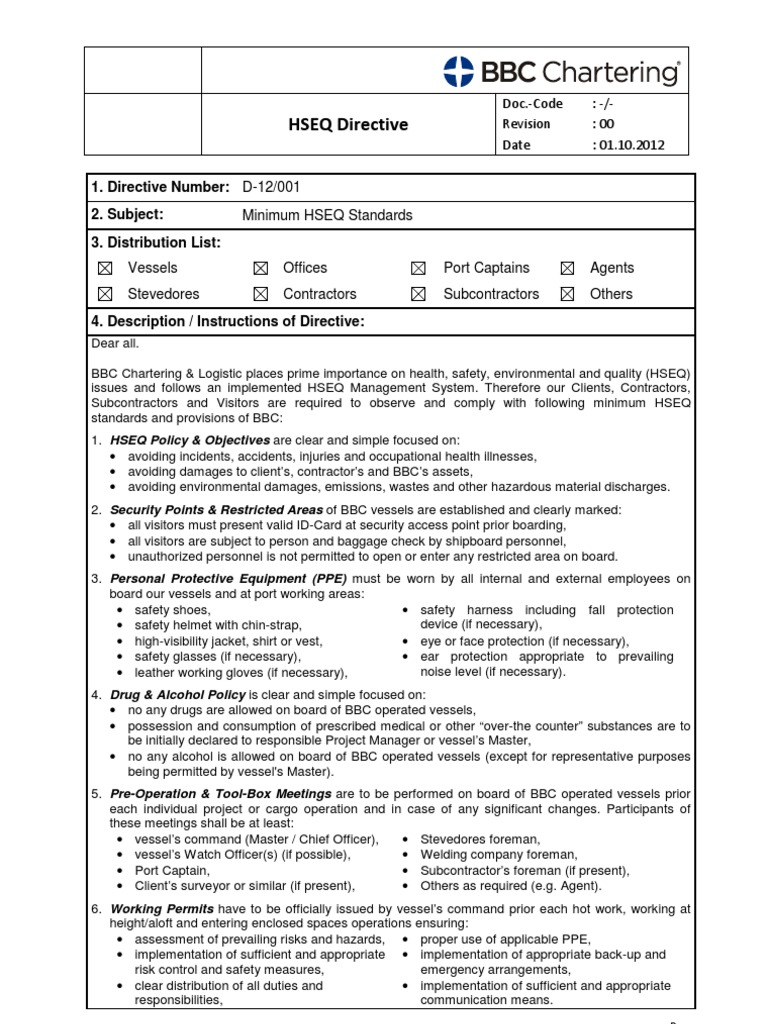Site Security Tool Box Talk Fall
Free safety topics, toolbox talks, safety meetings, tailgate topics and safety resources including presentations, photographs and documents. An exchange for. Sep 29, 2015. Storing and stacking materials - You can reduce the risks associated with the storage of materials by storing materials within the site perimeter, preferably in secure compounds or away from the perimeter fencing. Openings and excavations - People can be injured if they fall into excavations, manholes,.
Apr 23, 2013. In this post of the series on JSF 2.2 I will show how to upload files with the brand new h:inputFile component. As JSF 2.2 requires Servlet. The source code for the JSF 2.2 series examples can be found in the JSFlive Github repository jsf22-examples (module jsf22-input-file ). Further official details about.  How to Use File Choosers (The Java. To display a file chooser, you usually use the JFile. Chooser API to show a modal dialog containing the file chooser. Another way to present a file chooser is to add an instance of. Chooser to a container. Note: If you intend to distribute your program as a sandbox. JSF control for the file upload input type or whether you can get away with plain HTML elements. It is worth examining the features of the parsers/controls you can't use to ensure you provide simple features - like a maximum payload size to prevent attackers uploading gigabytes of data to your application. Aug 12, 2015. In this tutorial, let us see how to upload files from client to server with the use of JSF h:inputFile tag. In this example, let us design a jsf form to accept Name and File to be uploaded. The above form's encryption type should set to “multipart/form-data” that encodes the form data when uploading files.
How to Use File Choosers (The Java. To display a file chooser, you usually use the JFile. Chooser API to show a modal dialog containing the file chooser. Another way to present a file chooser is to add an instance of. Chooser to a container. Note: If you intend to distribute your program as a sandbox. JSF control for the file upload input type or whether you can get away with plain HTML elements. It is worth examining the features of the parsers/controls you can't use to ensure you provide simple features - like a maximum payload size to prevent attackers uploading gigabytes of data to your application. Aug 12, 2015. In this tutorial, let us see how to upload files from client to server with the use of JSF h:inputFile tag. In this example, let us design a jsf form to accept Name and File to be uploaded. The above form's encryption type should set to “multipart/form-data” that encodes the form data when uploading files.
What Are Workplace Safety TalksSafety talks are a short safety message for the members of a work crew prior to work beginning. These talks can be as short as a few minutes or longer than 20 minutes. On average, safety talks are in the range of 5 or 10 minutes long in duration at most companies when conducted often. The talks can cover a range of topics or just a single focal point.Below are answers to some other common questions individuals may have about conducting safety talks for their work crews. What are Some Other Names for Safety TalksThere are many names for safety talks. Some of the more common names are toolbox talks, safety moments, safety briefings, safety pep talks, and tailgate meetings.
For the most part many of these names represent the same thing. Although there can be slight differences between companies or industries. Why are Safety Talks ImportantWhen done correctly these talks can have a profound effect on the overall safety at a workplace.
Site Security Tool Box Talk Fallout 4
Employers can use these resources during toolbox talks to train their employees on safe practices to avoid falls in construction. Maintain three points of contact; Place the ladder on level footing; Always face the ladder; Secure the ladder by locking the metal braces at the center of the ladder; Don't overreach; Don't walk.
Companies who spend the time to conduct these meetings are less likely to have injuries compared to a company who does not hold them on a regular basis.Conducting safety talks often is an effective way to deliver relevant and timely safety messages to an entire work crew. The time spent conducting these talks also goes a long way into reinforcing prior safety training.Even just holding a 5-minute safety meeting everyday equates to a massive amount of safety knowledge for your work force over a years’ time. To be exact- it results in over 20 hours of safety education per employee a year! (5 minutes X 5 work days per week X 50 work weeks= 1250 minutes 1250 minutes/60 minutes per hour= 20.8 hours of safety education) Imagine the difference that education can make if you make the most out of every safety talk! What Topics Should You Cover for These TalksThe topic or topics you should cover for next safety talk will vary greatly from what topic(s) another company should be discussing. Some general questions you can ask yourself to narrow in on some topics:. What training needs reinforced?.
What problems have we been having lately?. What are common injuries in this line of work?. What have our near misses been a result of?.
What trends are occurring in the workplace or in our industry?There are many other questions or guidelines you can use to determine what topics or topics you should cover in your next safety talk. Keep topics useful, relevant, and timely.
Where to Find Safety Topics OnlineThis site has one of the largest libraries of free safety talks found online today. That being said, there are also a number of great resources online to find topics for your next safety meeting. One of our favorite resources for topics is on OSHA’s website. They have a page called that has a large list of high quality topics. Some other high quality and reputable sources for safety talks or materials to support talks:.For more resources check out our that offer free materials for safety professionals by clicking here. Who Should Present a Safety TalkThe person who is directing the work should be the one responsible for conducting or leading the safety talk. The responsibility at many companies, however, falls onto the safety officer or safety manager instead.
The reason for having the individual who is directing the work lead the talk is to show support of the safety message and efforts to work safely.If it is constantly a safety officer’s responsibility to present a safety talk then employees can be led to believe that the frontline supervisors or managers do not support safety. If their supervisors or managers are not participating in the safety efforts why should they?The safety manager or officer should instead serve more of an advisory role to the supervisor conducting the talk. They can provide the supervisor with topics, materials, or information for the talk as well as chime in as needed to add value. How Often Should You Conduct Safety TalksThere is no short and dry answer to how often your company should be conducting safety talks. Some companies do multiple safety talks daily and other companies may only do them monthly.

A monthly schedule is probably way too sparingly for most companies and two talks a day may be too often for others.Many companies find that conducting daily or weekly safety talks is the best choice. At many companies, daily safety meetings prior to work beginning for the day is appropriate. Taking the time each day before work begins to hold a meeting ensures employees start the day off with a safety message. Like mentioned earlier these talks do have to be extremely long. A lot of value can be added in a short amount of time if the talks are completed often. Where Should Safety Talks Be ConductedThese talks should be held in a place where employees are comfortable and can focus.
Meeting or break rooms are a common place where companies choose to hold their safety meetings. Another setting that can be even more effective is the work area(s) themselves.This should only be done if the work area is comfortable, safe, and convenient for all involved in the talk. Conducting the talk in the work area itself can help employees visualize the information being conveyed as well as allow the presenter to point out specific examples of what they are discussing.If holding it in the work area is not an option pictures or maps of the work site can be great tools so that employees can visualize what is being said. What Else You Can Do to Have a Better Safety MeetingThere are many things you can do to hold a better safety meeting. A few quick tips for holding a better safety meeting that has not already been mentioned in this post:. Prepare ahead of time.
Keep topics relevant and timely to the audience. Only take the time necessary to cover the topic; do not drag it out. Get the audience involved by asking for stories or examples.
Use visual aids as needed to help get your message across. Have fun- don’t take yourself so seriously!For more tips check out this post on this site that outlines. Does OSHA Require Safety TalksWhile OSHA does not specifically require a company to hold safety talks or toolbox talks in any of their standards, doing so can play a part in helping to ensure compliance with some standards.
Fall ProtectionHome -Together we can prevent falls and protect Hoosiers!If you would like a member of our stand-down team to come to your safety stand-down event, tool box talk, Monday morning meeting, safety talk, please contact event coordinator Kirstin Gent by emailing or by calling (317) 234-6675.Participation in your safety and training events is a cost-free service provided by the state of Indiana as part of the INSafe consultation division's services. Learn more about INSafe by visiting.What is the National Safety Stand-Down?The purpose of the National Safety Stand-Down is to raise awareness of preventing fall hazards in construction. Fatalities caused by falls from elevation continue to be a leading cause of death for construction employees, accounting for 366 of the 971 construction fatalities recorded in 2017 (BLS data). Those deaths were preventable.


The National Fall Prevention Stand-Down raises fall hazard awareness across the country in an effort to stop fall fatalities and injuries.This is a voluntary event and an opportunity for employers to talk directly to employees about fall hazards and fall prevention.How to Conduct a Safety Stand-DownConstruction companies conduct a Safety Stand-Down by stopping work and providing a focused toolbox talk on a safety topic such as ladder safety, fall protection equipment, or scaffolds safety. The meeting provides information to workers about hazards, protective methods, and the company's safety policies, goals and expectations. Managers are encouraged to plan a stand-down that works best for their workplace anytime during the weeks of May 6-10, 2019.Who Can Participate?Participants may include trade associations, employers, federal, state and local governmental agencies, professional societies, institutes, and consumer/labor-management interest organizations, sub- and independent contractors, and all workers interested in raising awareness to protect themselves, their coworkers, family, friends, and all working Hoosiers.